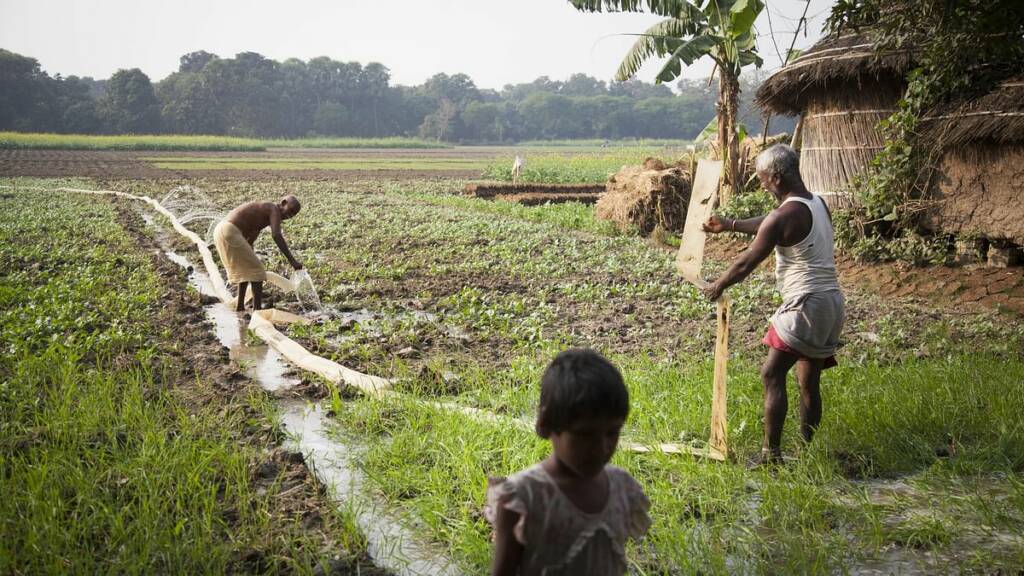In the last few days, there has been much talk about the agricultural growth of Bihar because the anti-reform apologists are arguing that the state abolished the APMC Act back in 2006 but it is still impoverished. This is the sturdiest argument one can ever digest because these data illiterate people do not know that Bihar’s agricultural growth in the last one and a half-decade has been around 8 per cent which is three times more than that of India’s average (3 per cent) and four times that of Punjab (2 per cent).
However, let us not restrain ourselves with the figure about the last 15 years when the states that had not joined the Agricultural revolution wave in the early 1970s- Bihar, MP, Maharashtra, Gujarat, and Karnataka- grew faster. It will be better to make a comparison right from the early 1970s when the Green Revolution started in Punjab, Haryana, and Western UP to 2020 when the states like Bihar and MP are growing at a faster rate.
Chidambaram Subramaniam, the Agriculture Minister of the country from 1964 to 1967, planted the seeds of the Agricultural Revolution in India. From 1956 to 1964, Punjab was ruled by a visionary leader named Pratap Singh Kairon, who looked after infrastructure creation in the state including Bhakra Nangal Dam which was completed in 1963. Also, under him, land consolidation took place in the state. These factors helped the state to become the favourite child of the Green Revolution wave that came next.
Moreover, between 1964 to 1970- when Prakash Singh Badal came to power- Punjab was practically being run from the centre due to lack of any strong state leader, and therefore, the Congress-run Union Government decided to make the state laboratory for the new agricultural experiments. Therefore, the Union Government preferred Punjab over much fertile part of the country, Gangetic plains which include UP, Bihar, and West Bengal.
Also read: Himachal Pradesh’s apple farmers are a shining example of how farm laws have bettered farmers’ lives
Asit Jolly, a journalist with India Today, perfectly describes the exponential pace of infrastructure creation and significant investment in a short span of time. “PAU, which eventually proved critical in adapting the new wheat varieties to local conditions, had been established in 1962; Markfed, the state’s marketing body, the Punjab Mandi Board, the Land Development & Reclamation Corporation and Punjab Agro Industries Corporation were also set up by 1965-66,” he wrote in an article titled Story behind Punjab’s Green Revolution.
“In addition, the (central) Agricultural Prices Commission was established in 1965, and FCI (Food Corporation of India) opened in 1964 and began procurement of wheat in the summer of 1965,” he added.
In the last 5 decades, the farmers of Punjab, Haryana, and Western Uttar Pradesh got billions of dollars from the Union Government in the form of subsidies. The Union government subsidizes agricultural on input front (seed subsidy, fertilizer subsidy, subsidized credit, power subsidy) as well as output front (MSP, investment in Agricultural marketing and so on).
More importantly, the majority of these subsidies go to Punjab and Haryana. Around 80 per cent of the Union government’s total procurement consists of Wheat (37 per cent) and Rice (43 per cent), and around 70 per cent of the total wheat and rice procurement is done from Punjab and Haryana only because these states have a sophisticated APMC network.
Punjab and Haryana started growing paddy despite the fact the crop is more suited to Eastern India (it needs a lot of water) because the union and state governments were giving various kinds of subsidies. Groundwater was exploited more because power was free, seeds were purchased given the subsidy, fertilizers were purchased to grow the crops because they were heavily subsidized, and later the Union Government was ready to purchase rice produced in these states at a subsidized price.
So, the production of paddy which should have risen in Eastern UP, Bihar, and West Bengal, given the suitable conditions, was being produced more in Punjab, thanks to subsidies by the Union Government and discriminatory procurement practices by the Food Corporation of India.
As of FY 20, the Union government spends around 3 lakh crore rupees of the taxpayer’s money on Agricultural subsidies (input+output), the majority of which goes to Punjab and Haryana. This money, or a part of this money, should have gone to poor states like Bihar for the betterment of the agrarian sectors, but rich states like Punjab are surely growing at the cost of Bihar.
